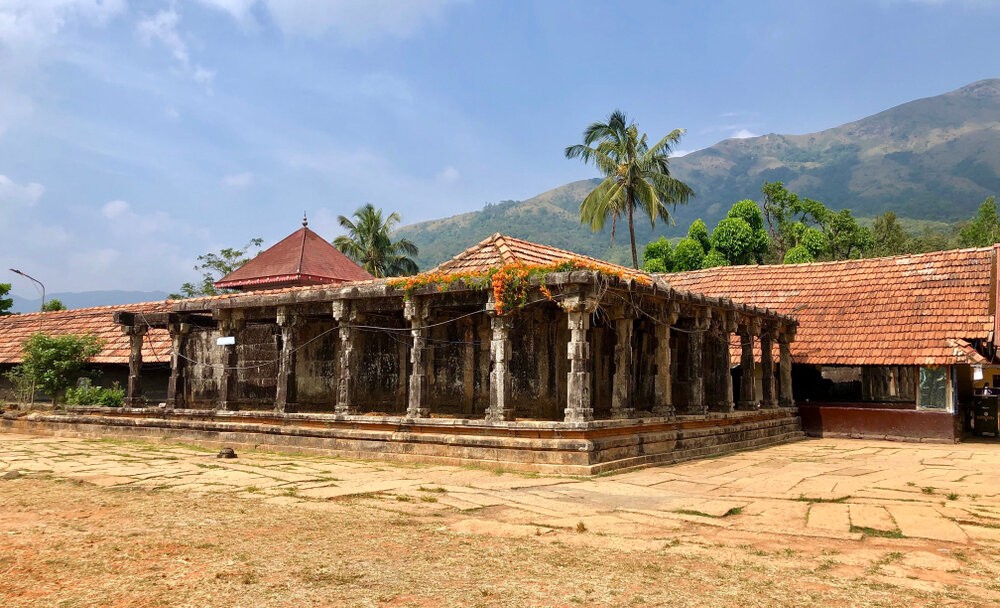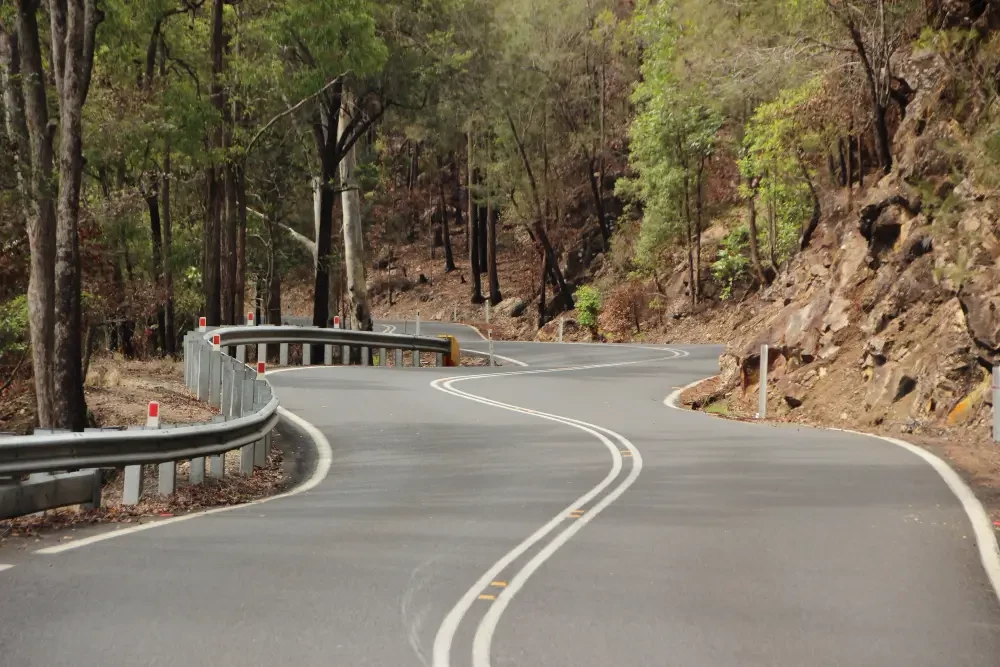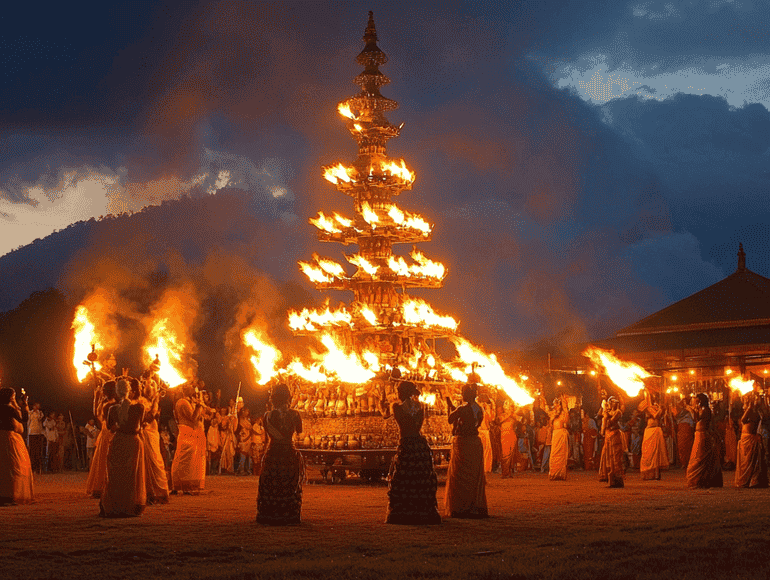Interesting facts about Thirunelli temple, Wayanad
Temples always bring a sense of inner awareness and calmness into one’s body. It is when you are stressed that the serene atmosphere brings you tranquility of mind and body. Kerala is home to a lot of such beautiful places of worship, and Thirunelli Temple in Wayanad offers you an additional perk: the beauty of the Western Ghats.
On the Brahmagiri Hills in Wayanad, near 900 meters above sea level, is the ancient Vishnu temple known as Thirunelli Temple. The place is 30 km away from the nearest city, Mananthavady. It is not just a place for pilgrims but also an equally enticing place for trekkers and bird lovers.
Get Exciting Packages for a Wayanad StayHistory of Thirunelli Temple
The Malayalam and Tamil word for amla, or gooseberry, is where the name "nelli" originates. The temple's name, Thirunelli, is said to have been bestowed upon it when Lord Brahma, while circling the globe, came across an idol of Lord Vishnu resting in a valley on an amla tree, hence the name "Thirunelli." After placing the idol, Brahma gave the temple the name Sahyamalaka Kshetra. The legend of the spring and river near the temple, known as "Papanasini," begins when Lord Vishnu, in response to Brahma's request, promised that the waters of the region would wash away all sins.
In the Sahya Valley, a beautiful Vishnu temple surrounded by hills and vegetation is described in the Padma Purana by Veda Vyasa. The temple is also referred to as Amalaka Temple or Sidha Temple. When history is taken into account, the temple's founder is known to have been a Chera king named Kulasekharan. He was the one who embraced the missionary zeal to spread the notion that Vishnu was the only deity worthy of worship. He is credited with writing the devotional poem Mukunda Mala in Sanskrit, in which he humbly implores Lord Vishnu to instill devotion in him.
Take a look at Top 5 Historical Places You Must Visit In Wayanad
Architecture of Thirunelli Temple
It looks very similar to the other temple structures in Kerala. It has an inner sanctorum, which is surrounded by a tile roof structure. There is an open courtyard around the sanctorum, and the east entrance is decorated with a granite lamp post. The only difference that makes it stand out from other temples is the absence of a flag post, but the hole where it was once placed still remains in place. The outer wall of the temple is beautifully bound by granite pillars that are cut in cubical style. It has an incomplete appearance and another architectural style that is not commonly seen in Kerala. The temple's incomplete style was attributed to the fact that the temple's renovation was halted in the middle by the temple's owner, the then-king "Vellattiri."
The positioning of the temple in the middle of the forest leaves no doubt that it was inaccessible to the public for a long time in the past. The books state that Thirunelli was an urban center bustling with crowds in the 10th century. You can also find some effective remains of an ancient village around the temple.
“UnniyachiCharitham” is a compilation of poems in which there is a detailed description of the temple. It also describes the village of Thirunelli and the river Papanasini that goes by it. It is as good as a travelogue and lets you see exactly through the poet’s eyes.
Another interesting element that might catch one’s attention is the stone aqueduct. When she discovered the temple was running out of water, Chirackal Raja's wife decided to install the duct. The water was sourced from a stream inside the forest called “Varaha,” and she herself sent the men and materials needed for installing the aqueduct in the temple. The interesting thing about the duct is that it still gives you cold, gushing water from the hills.
There is also a temple pond called the “Panchatheertham.” The pond can be seen behind the temple, and there are stairs that lead to it. It was known to be the meeting point of five rivers, hence the name. It has mostly dried out during the summer months now. There is a boulder in the middle of the pond that is said to have the imprints of the foot of Lord Vishnu.
Foreigners also found great interest in the temple, and Mr. William Logan, a Scottish officer of the Madras Civil Service under the British Government, wrote about the temple in his book called “Malabar Manual” in 1887.
Bali Tharpanam- the rituals for the deceased
This is one of the temple's most famous rituals, which is largely attributable to the notion that the river Papanasini was imbued with. The rituals are performed close to a stone called "Pindipara" that is close to the river. When after-death rites are carried out here, it is thought that "moksha" (soul liberation) will be attained more quickly. It is also a known legend that Ram and Lakshman came down here to perform the last rites of their father, and the same applies to Lord Parashuram as well.
Gunika Temple
On the way to the Papanasini River, after crossing the bridge, you can see a small temple that is dedicated to Lord Shiva. The presence of the temple makes it even more sacred, as all three deities of Hindu mythology are present there: Lord Vishnu, Lord Brahma, and Lord Shiva.
Best Time to Visit
It is ideal to curate your itinerary in such a way that you can visit the Thirunelli Temple in the morning hours. This will ensure that you get a good glimpse at how the temple rituals are performed. It will also give you enough time to explore the surroundings and witness the beauty of nature in all its glory. You can easily spend around 2 hours walking around the temple premises.
How to reach the Thirunelli Temple
You can take a bus from the nearest town, Mananthavady, and the temple is around 32 km away from here. The ride from Mananthavady to Thirunelli is a treat to the eyes; you will be moving along with the gushing wind into the wilderness of the Western Ghats. For miles altogether, you cannot see any kind of habitation; it is just the dense forests and some occasional glimpses of the paddy fields.
Opening Hours of Thirunelli Maha Vishnu Temple
The Thirunelli Temple is open from 5.30 a.m. to 12.30 p.m. and again from 5.30 p.m. to 8 p.m.
Entrance Fee of Thirunelli Maha Vishnu Temple
There is no entrance fee for the temple, but there is a fee charged to park the vehicles outside of the temple premises. There will be additional charges if you want to perform any rituals with the priest of the temple.
Planning your stay at The Woods Resorts is the best way to bring the entire trip and stay together. Hassle-free stay and good food will all the more make your trip memorable.
Also read: 15 Exciting Things to Do in Wayanad







